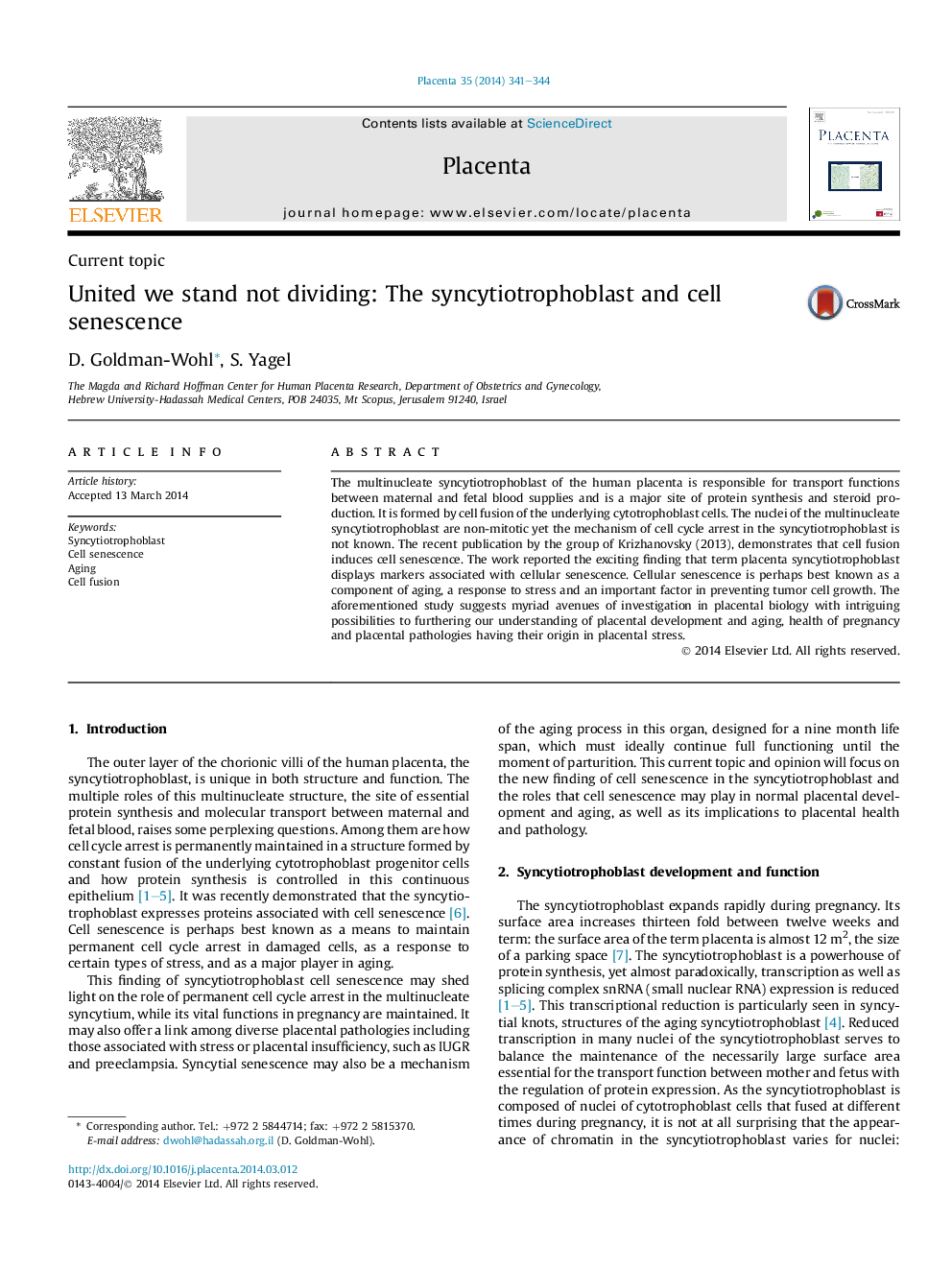| کد مقاله | کد نشریه | سال انتشار | مقاله انگلیسی | نسخه تمام متن |
|---|---|---|---|---|
| 2788796 | 1154450 | 2014 | 4 صفحه PDF | دانلود رایگان |
• The syncytiotrophoblast is formed by fusion of the underlying cytotrophoblast cells.
• Nuclei of the multinucleate syncytiotrophoblast are non-mitotic.
• Krizhanovsky (2013) demonstrates that cell fusion induces cell senescence.
• These observations raise possible avenues of investigation in placental biology and placental pathologies.
The multinucleate syncytiotrophoblast of the human placenta is responsible for transport functions between maternal and fetal blood supplies and is a major site of protein synthesis and steroid production. It is formed by cell fusion of the underlying cytotrophoblast cells. The nuclei of the multinucleate syncytiotrophoblast are non-mitotic yet the mechanism of cell cycle arrest in the syncytiotrophoblast is not known. The recent publication by the group of Krizhanovsky (2013), demonstrates that cell fusion induces cell senescence. The work reported the exciting finding that term placenta syncytiotrophoblast displays markers associated with cellular senescence. Cellular senescence is perhaps best known as a component of aging, a response to stress and an important factor in preventing tumor cell growth. The aforementioned study suggests myriad avenues of investigation in placental biology with intriguing possibilities to furthering our understanding of placental development and aging, health of pregnancy and placental pathologies having their origin in placental stress.
Journal: Placenta - Volume 35, Issue 6, June 2014, Pages 341–344
